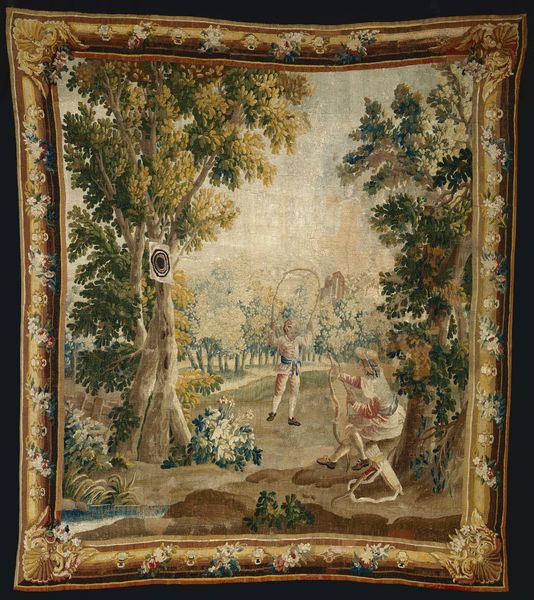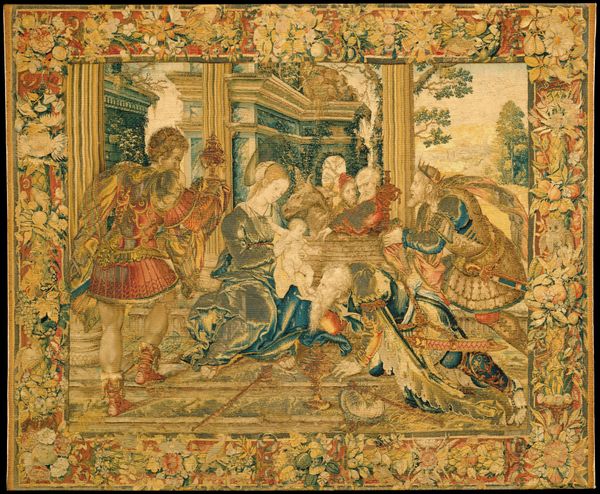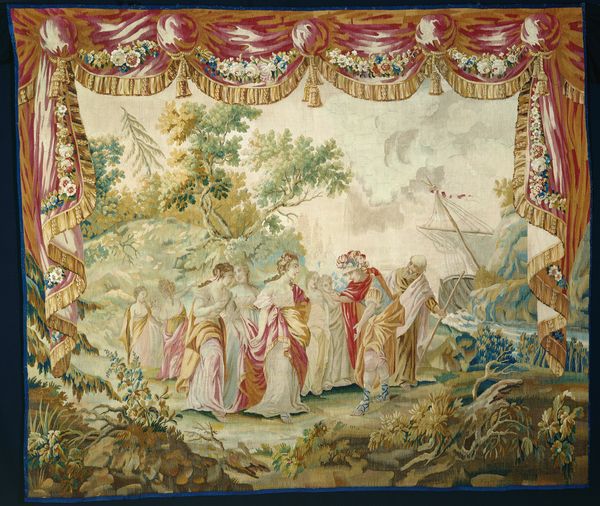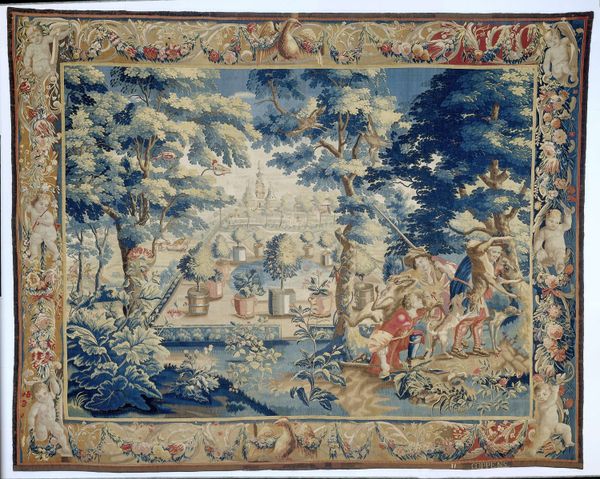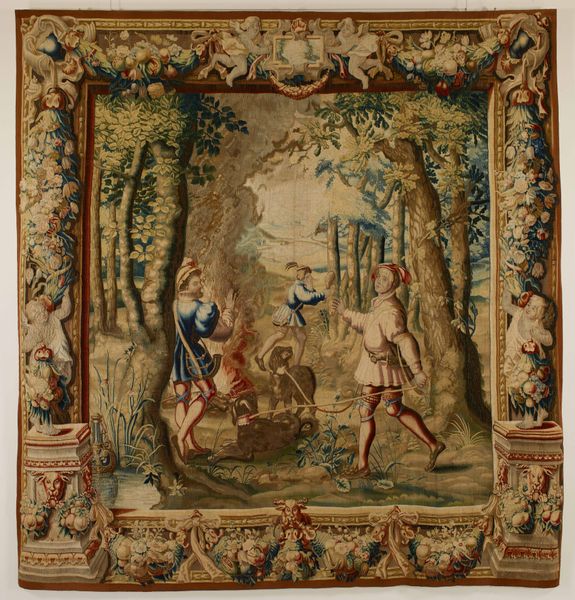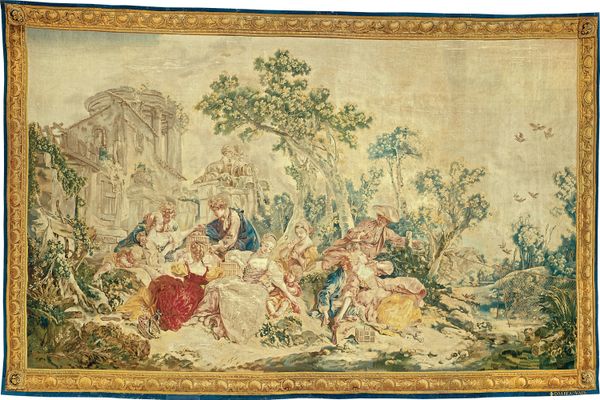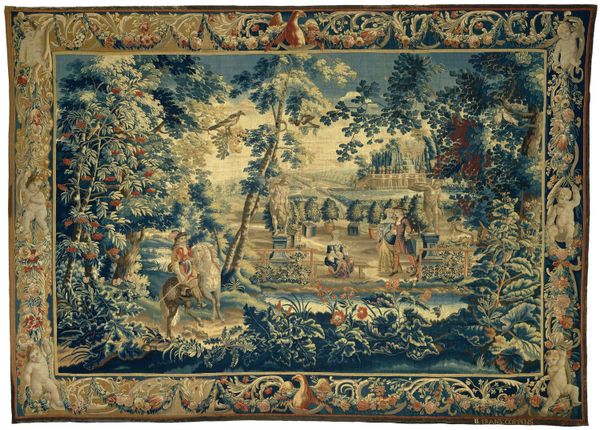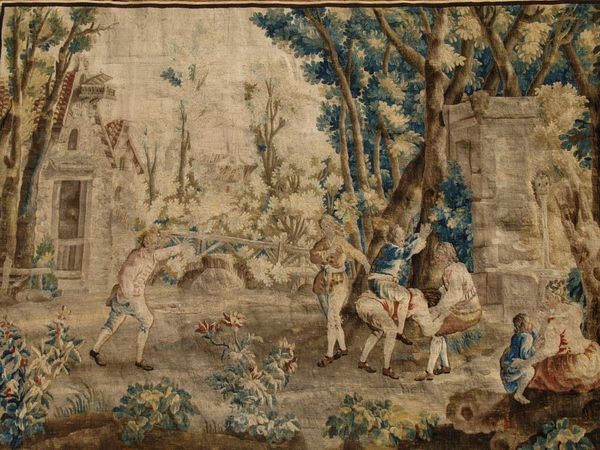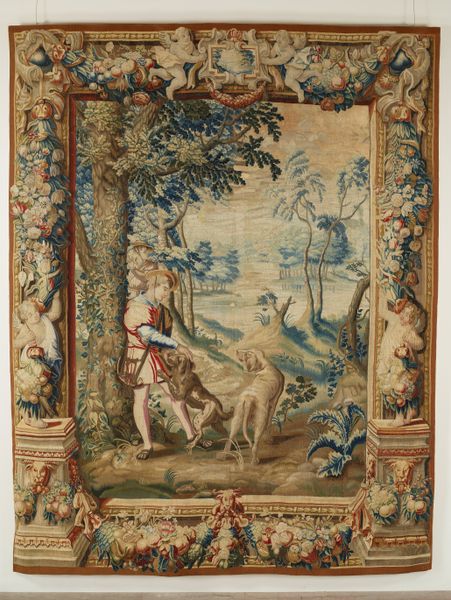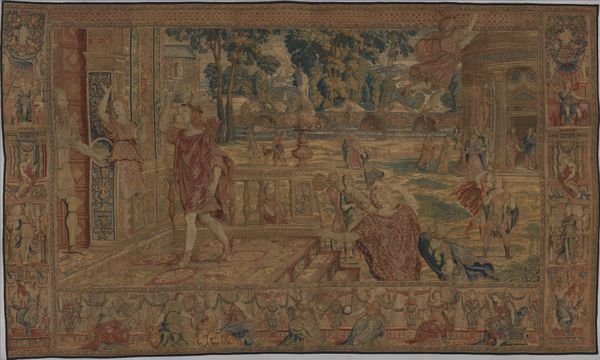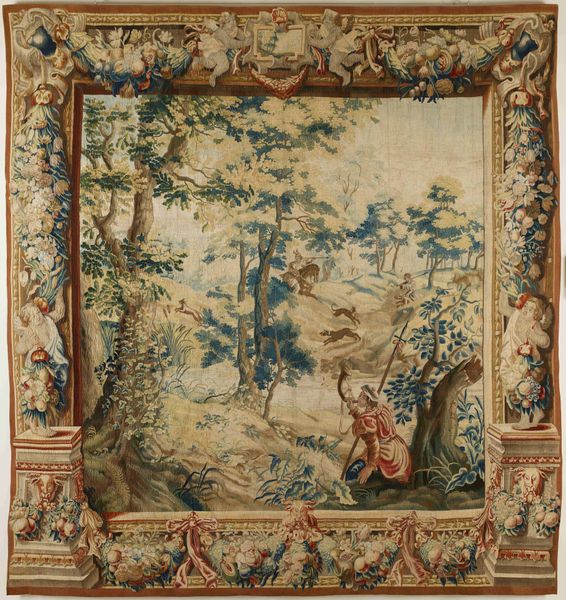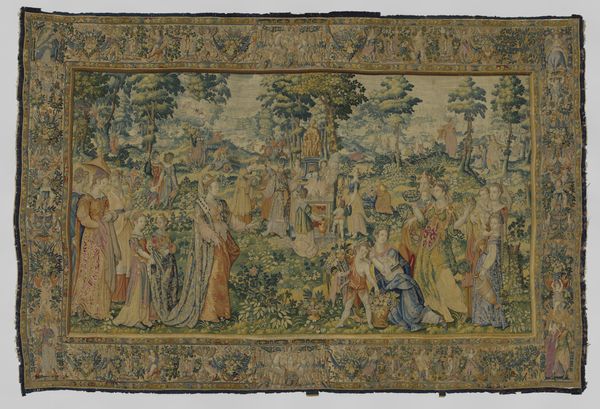
plein-air, weaving, textile
#
baroque
#
plein-air
#
weaving
#
landscape
#
textile
#
figuration
#
text
#
handmade artwork painting
#
oil painting
#
history-painting
Dimensions: 500.3 × 210.8 cm (196 7/8 × 83 in.)
Copyright: Public Domain
Daniel Janssens wove this enormous tapestry depicting Pygmalion from Ovid's *Metamorphoses*, sometime in the second half of the 17th century. It's a story about art, love, and transformation. The tapestry depicts Pygmalion’s sculpture coming to life after the goddess Venus answers his prayer. The setting, with its palatial architecture and manicured gardens, evokes the grandeur and idealised landscapes favoured by wealthy patrons of the arts in the Dutch Golden Age. Tapestries like this were status symbols, commissioned by the elite to decorate their homes and signal their refined taste and classical education. But beyond its aesthetic appeal, the tapestry also speaks to broader questions about the social role of art. Is it purely decorative, or can it transform reality and challenge existing social norms? To understand it better, we might consult archival records of Janssens' workshop or the inventories of wealthy collectors. By studying its social and institutional context, we can better appreciate its enduring power as a work of art.
Comments
No comments
Be the first to comment and join the conversation on the ultimate creative platform.
